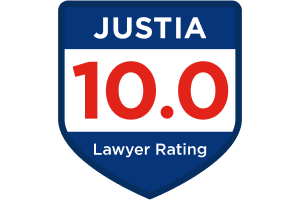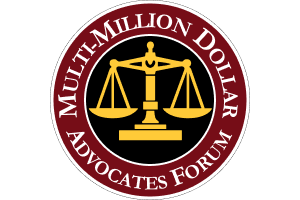The Use of Risk Multipliers in Calculating Attorney’s Fees
Monroe County Bar Association
January 31, 2003
Ira H. Leesfield
Leesfield & Partners
2350 South Dixie Highway
Miami, Florida 33133
(305) 854-4900
Major Cases and Issues
1. Attorney Fees are Generally Not Recoverable: This is rather evident; the major Supreme Court case in recent years reaffirming this proposition was Hensley v. Eckerhart, 461 U.S. 424, 429 (1983) which stated that attorney fees ordinarily are not taxable as costs against the losing party and are not directly recoverable as an element of damages.
2. However, attorney fees may be recoverable in certain circumstances:
- CONTRACT: Where a party has sued under a contract and the contract includes a valid agreement for a fee award to the prevailing party. See Crowley American Transport, Inc. v. Richard Sewing Mach. Co., 172 F.3d 781, 785 (11th Cir. 1999).
- INHERENT POWER OF THE COURT: This can include situations where the parties have acted in bad faith or disobeyed a court order. Also, there can be fees awarded for violation of the Rules of Civil Procedure such as Rule 11 violations. Further, contempt of court can sometimes result in taxing of attorney fees.
- STATUTORY FEES: Federal Statutes often award attorney fees to the winning party, under a fee-shifting provision of the statute. These are prevalent throughout federal litigation. Several different statutes provide for fee shifting (see Appendix). If these statutes have been applied to the “prevailing party,” generally either the prevailing plaintiff or prevailing defendant may recover. Fogerty v. Fantasy, Inc., 510 U.S. 517, 534 (1994).
The Multiplier in Federal Courts
In the federal system, the traditional way that courts took into account an attorney’s risk in litigating a case under a statute with a fee-shifting provision was to come up with a “lodestar” amount and then multiply that by some number which accounted for the risk of the case. The “lodestar” amount was a function of the hours of the attorneys time spent on the case multiplied by some reasonable hourly rate. The Supreme Court determined that this was a starting point in determining the fee awards in civil rights cases, and that the district court should take into account the likelihood that the defendant would prevail and multiply the “lodestar” amount to enhance that award. See Hensley v. Eckerhart, 461 U.S. 424 (1983). However, the Court quickly adjusted their reasoning on risk multipliers, and just one year later held that these risk multiplier adjustments are rarely appropriate under fee shifting provisions of statutes. See Blum v. Stenson, 465 U.S. 886 (1984).
The trend toward limiting the use of multipliers in federal courts was extended by several other decisions issued by the Supreme Court during the 1980s and 1990s. The most important decisions were Delaware Valley II and Burlington v. Dague:
Pennsylvania v. Del. Valley Citizens’ Council for Clean Air, (Delaware Valley II), 483 U.S. 711 (1987). In the past, the most important use of risk multipliers was their use in enhancing fees grated under federal statutes with fee-shifting provisions. In this case, the Plaintiff sued Pennsylvania for violation of the Clean Air Act, which contained a fee shifting provision, and the lower court awarded applied a risk multiplier to the lodestar formula used in assessing a reasonable fee. In a 4-1-4 decision, the Court overturned the multiplier and reversed, stating that fee shifting was intended by Congress to provide a means by which poor clients could afford representation, and was not intended to be multiplied or enhanced due to risk assumed by the attorney in bringing the claim. However, the result of this case was in doubt as only 4 justices concurred with the opinion, 4 dissented, and O’Connor concurred with the result but not the reasoning.
Burlington v. Dague, 505 U.S. 557 (1992). In this case, the Court finally came together in a 6-3 opinion authored by Scalia. They essentially did away with the use of a multiplier applied to the “lodestar” amount in situations where there was a statutory fee-shifting provision. The Court determined that factors such as attorney risk should have already been internalized into the calculation of the lodestar amount. Therefore, items such as attorney risk, novelty, etc. that had previously been used to calculate a multiplier should be used to calculate the reasonable hourly rate of services. A multiplier for the risk of non-recovery would, in Scalia’s words, “provide attorneys with the same incentive to bring relatively meritless claims as relatively meritorious ones.” (p. 563). While the holding of the Court was limited to only the statutes that the Court had under consideration, the reasoning of this case points to a strong presumption against the ability to enhance the lodestar value in cases of contingent fee arrangements. In fact, Scalia stated at the outset that federal fee-shifting statutes should be interpreted similarly, so the particular provision before the Court was of little importance.
Since Dague, the federal Circuit Courts have applied the decision to most fee-shifting statutes. Some examples include:
Third Circuit: In Warren v. Reading Sch. Dist., 2000 WL 122353 (E.D. Pa.) The court stated the holding of Dague as “contingency multipliers should not be used where fee shifting is authorized by federal statute.” (p. 2). The court relied on the Prudential Ins. Co. America Sales Practice Litig. Actions, 148 F.3d 283 (3d Cir. 1998) case for this proposition.
Sixth Circuit: Davis v. Mutual Life Ins. Co. of New York, 6 F.3d 367 (6th Cir. 1993). The Court determined not to apply a risk multiplier on the basis of Dague.
Eleventh Circuit: Murphy v. Reliance Standard Life Ins. Co., 247 F.3d 1313 (11th Cir. 2001). The Court held that on the basis of Dague, risk multipliers were not to be applied to any federal statute which contained a fee shifting provision.
The Multiplier in Florida
A. Florida Patient’s Compensation Fund v. Rowe, 472 So. 2d 1145 (Fla. 1985).
In this case, the Florida Supreme Court established definite guidelines for setting attorney fee awards under fee-shifting statutes. The Court set out several factors to be considered when calculating a reasonable attorney fee (the lodestar):
- The time and labor required, the novelty and difficulty of the question involved, and the skill requisite to perform the legal service properly.
- The likelihood that the case would preclude the handling of other cases by the lawyer.
- The fee custumarily charged for similar services in the area.
- The amount of compensation involved and the results obtained.
- The time limitations imposed by the client or the circumstances.
- The nature and length of the relationship with the client.
- The experience, reputation and ability of the lawyer.
- Whether the fee is on a fixed or contingent basis.
Once a reasonable fee was calculated (the lodestar), the Rowe court then allowed for the trial court to multiply that fee by a “contingency risk” factor depending on the likelihood that the attorney would be paid for the litigation had he or she not prevailed. The reasoning was that “Because the attorney working under a contingent fee contract receives no compensation when his client does not prevail, he must charge a client more than the attorney who is guaranteed remuneration for his services. When the prevailing party’s counsel is employed on a contingent fee basis, the trial court must consider a contingency risk factor when awarding a statutorily-directed reasonable attorney fee.”
B. Standard Guar. Ins. Co. v. Quanstrom, 555 So. 2d 828 (Fla. 1990).
This case involved recovery by an insurance policyholder against the company, and the policyholder sued for fees as provided for in Fla. Stat. § 627.428(1) (1989). The court held that while Quanstrum and her attorney had a contingency fee arrangement, the fee-setting guidelines of Rowe did not dictate that there be a mandatory contingency fee multiplier. (p. 829). In coming to this conclusion, the Court determined that Rowe’s multiplier was not mandatory, and the trial court must decide whether to apply a fee multiplier in cases of contingency fee contracts. The holding in Rowe stating the court “must consider a contingency risk factor” was interpreted by the Quanstrom Court as not to mean the lower court must apply a contingency risk factor, only that it must consider it as an option in its calculation of fees.
Also important to the Quanstrom Court’s reasoning was the Supreme Court’s decision in Delaware Valley II, which this Court interpreted as having virtually eliminated the contingency risk factor in calculating fee awards in federal courts. In the holding, therefore, the Court added factors to assist judges in determining whether to use a multiplier:
- Whether the relevant market requires a contingency fee multiplier to obtain competent counsel;
- Whether the attorney was able to mitigate the risk of non-payment; and
- Whether any of the factors set forth in Rowe are applicable, especially the amount involved, the result obtained, and the fee arrangement with the client.
In the end, the Quanstrom court reaffirmed that fee multipliers can be used for evaluating the awards of attorney fees in contingency arangements where the Plaintiff prevails under a statutory claim and that statute contains a fee-shifting provision. The multiplier, however, was capped at 2.5 times the lodestar figure, a reduction from the Rowe Court’s determination that the multiplier should be capped at 3 times the lodestar. Though limited, the multiplier remains after Quanstrom.
C. Bell v. U.S.B. Acquisition Co., Inc., 734 So. 2d 403 (Fla. 1999)
This case gives a good synopsis of the jurisprudence on multipliers in Florida. It reaffirmed that the courts in Florida can consider the use of a multiplier if the evidence in the record of the case support the need for a multiplier. It extends the Quanstrom analysis to cases where the award of fees was provided for in a contract rather than a state statute. The Court states:
A court may consider applying a multiplier as a “useful tool” in determining a reasonable fee if the evidence in the record establishes that: (1) the relevant market requires a contingency multiplier to obtain competent counsel; (2) the attorney was unable to mitigate the risk of nonpayment in any other way; and (3) use of a multiplier is justified based on factors such as the amount of risk involved, the results obtained, and the type of fee arrangement between the attorney and client. (p. 412).
Appendix: Federal Statutes with Fee-Shifting Provisions
- Age Discrimination in Employment Act of 1967, 29 USCA § 626(b)
- Civil Rights Act of 1964, Title VII, 42 USCA § 2000e-5(k)
- Civil Rights Attorney’s Fees Awards Act of 1976, 42 USCA § 1988
- Clayton Act, 15 USCA § 15
- Clean Air Act, 42 USCA §§ 7413(b), 7604(d), 7622(b)(2)(B), (e)(2)
- Comprehensive Environmental Response, Compensation and Liability Act (CERCLA), 42 USCA § 9612(c)
- Consumer Leasing Act, 15 USCA § 1667b(a)
- Consumer Product Safety Act, 15 USCA §§ 2060(c), 2060(f), 2072(a), 2073
- Copyright Act, 17 USCA § 505
- Employee Retirement Income Security Act (ERISA), 29 USCA § 1132(g)
- Endangered Species Act, 16 USCA § 1540(g)(4)
- Equal Access to Justice Act (EAJA), 5 USCA § 504; 28 USCA § 2412
- Equal Credit Opportunity Act, 15 USCA § 1691e(d)
- Fair Credit Reporting Act, 15 USCA §§ 1681n, 1681o
- Fair Debt Collection Practices Act, 15 USCA § 1692k
- Fair Housing Act of 1968, 42 USCA § 3612(c)
- Fair Labor Standards Act, 29 USCA § 216(b)
- Freedom of Information Act (FOIA), 5 USCA § 552(a)(4)(E)
- Hart-Scott Rodino Antitrust Improvements Act of 1976, 15 USCA §§ 15c(a)(2),(d)(2) & 26
- Labor-Management Reporting and Disclosure Act of 1959, 29 USCA §§ 431(c), 501(b)
- Patent Infringement Act, 35 USCA § 285
- Securities Act of 1933, 15 USCA § 77k(e)
- Securities Act of 1934, 15 USCA § 78r(a)
- Solid Waste Disposal Act, 42 USCA § 6972(e)
- Tax Equity and Fiscal Responsibility Act of 1982, 26 USCA § 7430(c)(1)(B)(iii)
- Tax Reform Act of 1976, 26 USCA § 6110(i)(2)
- Trademark Act, 15 USCA § 1117
- Truth in Lending Act, 15 USCA § 1640(a)
- Unfair Competition Act, 15 USCA § 72
- Water Pollution Prevention and Control Act, 33 USCA §§ 1365(d), 1367(c)







